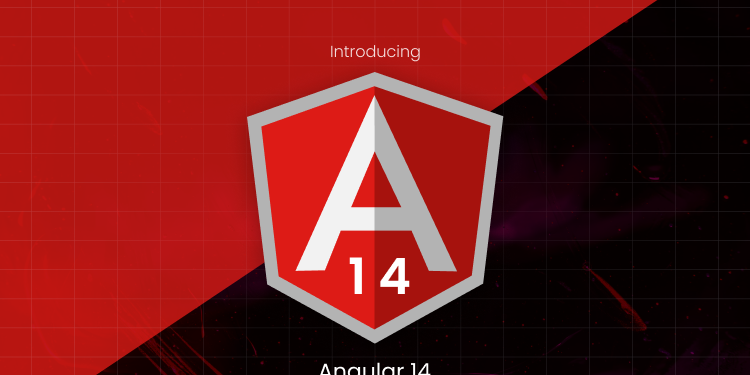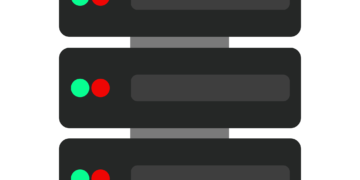Striking news for Angular Developers! Angular 14, the latest version of the TypeScript-based free and open-source web app framework was launched on 2nd June 2022. Considering all the releases before, Angular 14 is one of Angular’s most methodical pre-planned upgrades. If you are interested in a bird-eye view of what’s fresh in Angular 14, then here’s a quick sneak at latest Angular 14 features and updates.
Latest Angular 14 Features and Updates
1. Standalone Components
Now with Angular 14, modules are categorized as optional and standalone components will be possible. However, the purpose of Angular is to move away from the current state of affairs by creating artifacts like pipes, components, and directives, the main focus of the TypeScript-based Angular framework.
To make the NgModules optional, Angular has issued an RFC, i.e., Request for Comments on standalone components. The modules will not be retired fully in the latest update; rather, they will become optional to maintain compatibility with the existing Angular-based apps and libraries ecosystem. In the previous versions of Angular, every component needed a module association. Therefore, each component must be there in the declarations array of a parent module. Or else this will result in application failure.
2. Strictly Typed Forms
Angular 14 shuts Angular’s main GitHub issue, i.e., implementing strict typing for the Angular Reactive Forms Package. It will improve the modern-driven approach of Angular to work smoothly with forms.
The FormControl now accepts a generic type that tells a certain value it carries. However, the Angular team has added an Auto migration in v14 to guarantee that the prevailing applications will not be broken during the upgrade. API complexity is checked regularly, so the changes must be handled smoothly, and the ecosystem must not be split apart. Furthermore, the latest updates will not impact the template-based forms.
3. Angular CLI Auto-Completion
If your Angular CLI game is strong, you can settle on how to enhance productivity by delivering the needed commands to make artifacts like components, modules, and directives for your project. However, there are a plethora of commands at your disposal, yet many times you have to visit the official guide to scrutinize the commands and the commands options.
With the launch of Angular 14, this is no longer needed. Angular v14 is delivering the latest feature in the CLI, permitting real-time type ahead auto-completion in the terminal.
Initially, you must run the ng completion command in your terminal. After that, you just need to type the ng command, then press Tab to look for all the possible options for you, and Enter to opt for one of them. Furthermore, if you are working on the Angular 14 project, more auto-completion options, like the ng create command options, are available. The first time you must execute the ng completion command in your terminal.
4. Enhanced Template Diagnostics
Angular 14 came with improved templated diagnostics to protect the developers from basic mistakes by compiler matching to typescript code. Now, in Angular 13 and the previous Angular versions, there is no warning generated by the compiler, and it fails to develop if there comes an issue that would restrict it from doing so.
Warnings may be easily developed for basic issues, like incorrect two-way binding syntax or the use of unnecessary operators when the variable is not nullable. In addition, diagnostic tests are permitted with the expansion of a new private compiler that would give certain warnings or information diagnostics for user templates that are not precisely deadly.
5. Streamlined Page Title Accessibility
Your page title differently shows the content of your page when you are developing applications. In Angular 13, the entire process of adding titles was streamlined with the fresh Route.title property in the Angular router. However, Angular 14 doesn’t have more additional imports needed when you are adding a title to your page.
6. Latest Primitives in the Angular CDK
The Angular CDK, i.e., Component Dev Kit, offers a detailed set of tools for developing Angular components. Now, the Dialog and the CDK Menu have been pushed to a stable version in Angular 14. However, the new CDK primitives permit the making of more accessible custom components.
7. Angular DevTools is now present online
You can also employ the Angular DevTools debugging extension in offline mode. The extension is present under Mozilla’s Add-ons for Firefox users.
8. Optional Injectors
You can now mention an optional injector via ViewContainerRef.createEmbeddedView and TemplateRef.createEmbeddedView when developing an embedding view in Angularv14.
9. Built-in Enhancements
Angular 14 backs TypeScript 4.7 also targeting ES2020 by default. It permits the CLI to deploy small code without devaluing it. One more Angular 14 meaningful feature helps you to link to protected component members directly from our templates. You get more control over the public API surface of the reusable components.
10. Extended Developer Diagnostics
This feature from Angular v14 delivers an extendable framework that assists better insights into your templates and offers suggestions for potential boosts.
How to Install Angular 14?
You can simply install Angular v14 via npm by employing the next flag. Then, head forward with opening a new command-line interface and run the following command to install the new version of Angular.
npm install –global @angular/cli@next
Using this command, you can easily install the version of Angular CLI globally on your development machine.
How to Upgrade to Angular 14?
To upgrade from Angular 13 to 14, you must visit this link https://update.angular.io/
Read more about : Angular App Development Examples
To Sum Up
Developing Angular applications is now made easier, beginning with Angular 14, thanks to the debut of standalone components. The Angular developer community aims to ensure that web developers obtain better versions of the TypeScript-based framework, permitting them to stay updated with the other online ecosystem and users’ needs. Now that you are conscious of the latest Angular 14 features and upgrades, it’s time to move to Angular 14!















